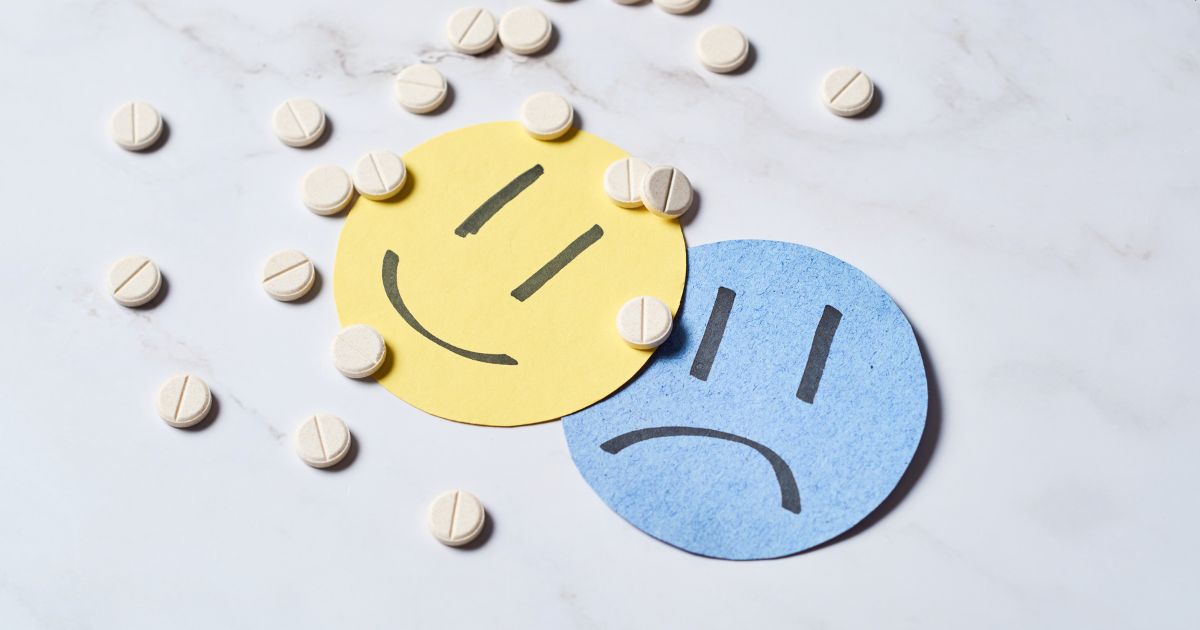What Is Xanax?
Xanax is a medication prescribed to treat anxiety, depression, and insomnia.
Some people mistakenly refer to Xanax as an opioid, but it’s actually the brand name of a benzodiazepine called alprazolam. A benzodiazepine is a tranquilizer medicine developed to treat anxiety and panic attacks. Benzodiazepines, such as Xanax, are also used to treat insomnia and seizures.
Xanax use is widespread in the United States. With 48 million Xanax prescriptions written each year, it’s the most commonly prescribed psychiatric medicine in the country. You may have heard them called “Xanax bars” which refers to the shape of a pill.
Due to this widespread availability, Xanax has also become a popular street drug, abused for its soothing and euphoric effects. Some try to buy it online. Other choose to take the drug in unintended ways, like snorting Xanax.
On the street, Xanax is known by a variety of names, including:
- Xannies/Zannies
- Benzos
- Bars
- Planks
- Bricks
- Xanbars/Zanbars
- Blue footballs
As implied by some of these nicknames, Xanax can come in several forms:
- Oral Tablets — This is the most common form of Xanax. They come in various strengths such as 0.25 mg, 0.5 mg, 1 mg, and 2 mg.
- Extended-Release Tablets — Known as Xanax XR, these tablets are designed to release the medication slowly over a longer period. These can also come in varying strengths like 0.5 mg, 1 mg, 2 mg, and 3 mg.
- Orally Disintegrating Tablets — These tablets dissolve quickly in the mouth and are available in different strengths.
- Liquid — Less commonly, alprazolam is available in a liquid form that can be measured and ingested via a dropper.
- Injectable Forms — Though very rare in most treatment settings, injectable forms of this medication do exist but are not commonly used in standard medical practice for anxiety or panic disorders.
Even compared to other benzodiazepines, Xanax is a highly addictive substance. For this reason, it’s classified as Schedule IV under the Controlled Substances Act. It should never be taken without a prescription.
Get confidential help from our addiction treatment specialists in Orange County. Call to join our rehab program today!
Call 866-881-1184Xanax Is a Benzodiazepine, Not an Opioid
As said before, Xanax is a benzodiazepine, not an opioid. Opioids and benzodiazepines are not the same. Benzodiazepines work by depressing the central nervous system, particularly by enhancing the effects of the neurotransmitter gamma-aminobutyric acid (GABA). It is used to treat anxiety disorders like generalized anxiety disorder, panic disorder, social anxiety, and more.
Opioids, on the other hand, are a class of drugs that are primarily used for pain relief. They work by binding to opioid receptors in the brain, spinal cord, and other areas of the body. Examples of opioids include morphine, hydrocodone, and oxycodone.
Both benzodiazepines and opioids have the potential for abuse and addiction, and they can be dangerous when misused, especially in combination with each other. Taking benzodiazepines and opioids together can lead to dangerous interactions, including severe respiratory depression, which can be fatal.
If you have questions about medication, it’s essential to consult with healthcare professionals for accurate diagnosis and appropriate treatment.
Can You Overdose on Xanax?
It is possible to overdose on Xanax. However, it’s not easy. The actual dosage range that could lead to a Xanax overdose is between 331 and 2100 mg per kilogram of body weight. What this essentially means is that you would have to take a very large amount of Xanax to overdose.
Overdose can occur when someone takes a much larger dose than prescribed or when Xanax is taken in combination with other substances like alcohol, opioids, or other central nervous system depressants.
The symptoms of a Xanax overdose can include:
- Extreme drowsiness or fatigue
- Confusion or impaired coordination
- Slurred speech
- Slowed or difficulty breathing
- Loss of consciousness or coma
An overdose involving Xanax or other benzodiazepines can be life-threatening, particularly if it causes severe respiratory depression. If you believe you or a loved one has overdosed on Xanax, seek immediate medical help. And moving forward, seek Xanax addiction treatment.
Looking for quality substance abuse treatment that’s also affordable? South Coast accepts most major insurance providers. Get a free insurance benefits check now.
Check Your CoverageWhat Are the Signs and Symptoms of Xanax Abuse?
Taking Xanax has risks. One of which is drug abuse. The signs of Xanax abuse may show in various ways. both physically and behaviorally. It’s crucial to recognize these signs early, as misuse can lead to dependency, increased risk of overdose, and other health complications.
Below are some physical signs and symptoms of Xanax abuse:
- Drowsiness or excessive sleepiness
- Slurred speech
- Poor coordination or unsteady movements
- Slow reaction times
- Respiratory depression (slowed or shallow breathing)
- Dizziness or light-headedness
A person who abuses Xanax may also exhibit various behaviors, such as:
- Taking larger doses of Xanax than prescribed or using it without a prescription
- Obtaining multiple prescriptions from different doctors (“doctor shopping”)
- Social withdrawal or neglecting responsibilities
- Decreased interest in once enjoyable activities
- Increased focus on acquiring and using the drug
- Engaging in risky behaviors while under the influence
- Using the drug in ways other than intended, such as crushing and snorting it
- Being defensive or secretive about drug use
Cognitive issues caused by Xanax abuse include:
- Memory problems or blackouts
- Confusion or disorientation
- Increased irritability or aggression
- Mood swings or emotional instability
- Anxiety or panic attacks, ironically, as the medication is intended to treat anxiety
If you or someone you know is showing signs of Xanax abuse, it’s crucial to seek treatment for Xanax addiction. Abuse of benzodiazepines like Xanax can lead to a range of health problems, including dependency and increased risk of overdose.
Anxiety Treatment at South Coast Behavioral Health
People who abuse Xanax often suffer from anxiety.
Rather than abuse 3an addictive benzodiazepine like Xanax, if you suffer from anxiety you need proper treatment.
Moreover, it’s easy to overdose on Xanax. This is especially the case when taking Xanax with alcohol (people who suffer from anxiety often abuse alcohol).
If you or a loved one are struggling with anxiety or Xanax addiction, South Coast Behavioral Health is here to help. The first step in treating Xanax addiction is a medical detox. This means using drugs to manage withdrawal symptoms.
Our medical detox program in California is staffed by caring and compassionate professionals who can provide you with medications to manage your withdrawal symptoms. This may include things like anti-seizure medication and antidepressants.
After detoxing, treatment should involve therapy to treat the drivers of addiction.
Treatment for substance abuse takes place along an entire spectrum of care. Along that entire spectrum are various behavioral therapies, support groups, and medically-assisted treatment (MAT).
These levels of treatment are, in order, as follows:
Residential Treatment in California
After completing medical detox, you’ll move to receive inpatient treatment in Orange County California. There, you’ll receive medically-assisted treatment and dual diagnosis treatment to deal with any cravings or co-occurring mental health issues you may be battling.
We also offer residential treatment facilities in Costa Mesa, Irvine, and Huntington Beach for those who desire gender-specific treatment. There, patients get round-the-clock medical attention and monitoring while living at the institution full-time.
In addition to individual and group counseling and medication management, you’ll also have access to leisure activities and family support services.
Partial Hospitalization in California
Most clients start substance abuse treatment with South Coast in our residential treatment program. After completing that, many desire something that still provides structure and support, but with extra space and time to oneself. For that, we offer Partial Hospitalization in Newport Beach.
A step down from inpatient care but with more structure than conventional outpatient programs, partial hospitalization offers a good balance for those looking to ease back into normal life. Clients can receive care five to seven days a week for several hours each day, returning to their homes in the evening.
This way, they can recover without putting their daily lives completely on hold, receiving intense therapeutic interventions like group and individual therapy, skill development, and medication management as necessary.
Intensive Outpatient Treatment in California
For those leaving inpatient residential treatment or partial hospitalization, intensive outpatient programs (IOP) are yet another gradual step forward on the road to recovery.
With a focus on group therapy, individual counseling, and education, clients undergoing Intensive Outpatient Treatment in Newport Beach can meet three to five days a week. Each session lasts three hours.
This level of care requires the least amount of attendance at a facility.
Get Started Today
Xanax addiction is a serious disease but can be overcome with proper treatment. If you or a loved one are struggling with anxiety or Xanax addiction but wonder how long addiction treatment takes or have other questions, call us at 866-881-1184. Our highly qualified staff will be happy to help give you an idea of what to expect from your addiction recovery timeline, help verify your insurance, and assist with any other questions you may have.
Reach out today to speak with a representative who can help you determine your treatment options and get you started on the road to recovery.








